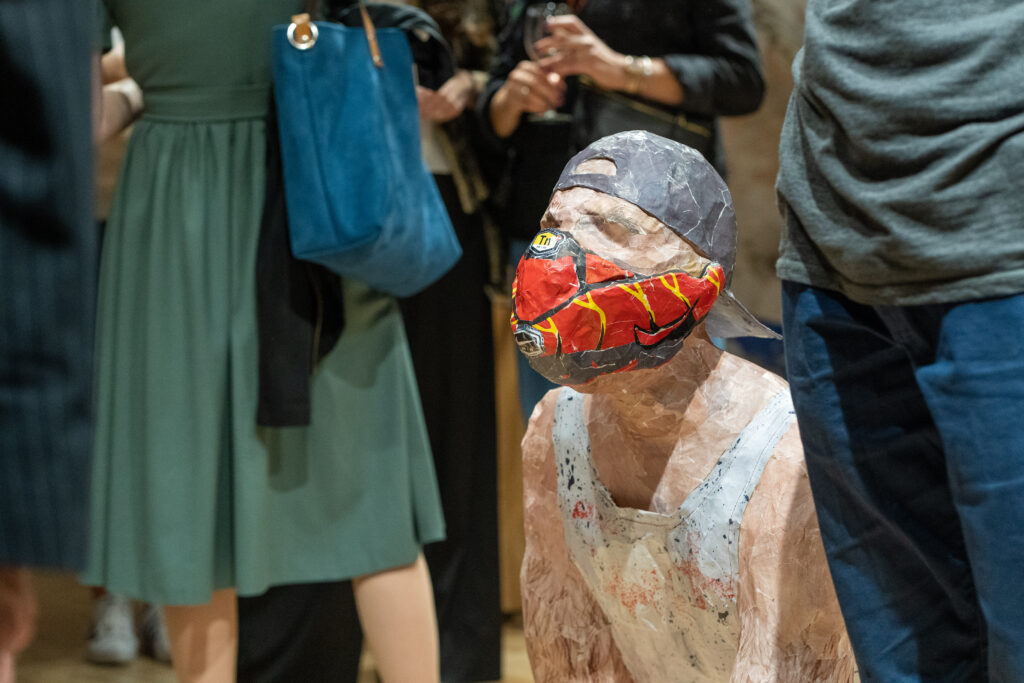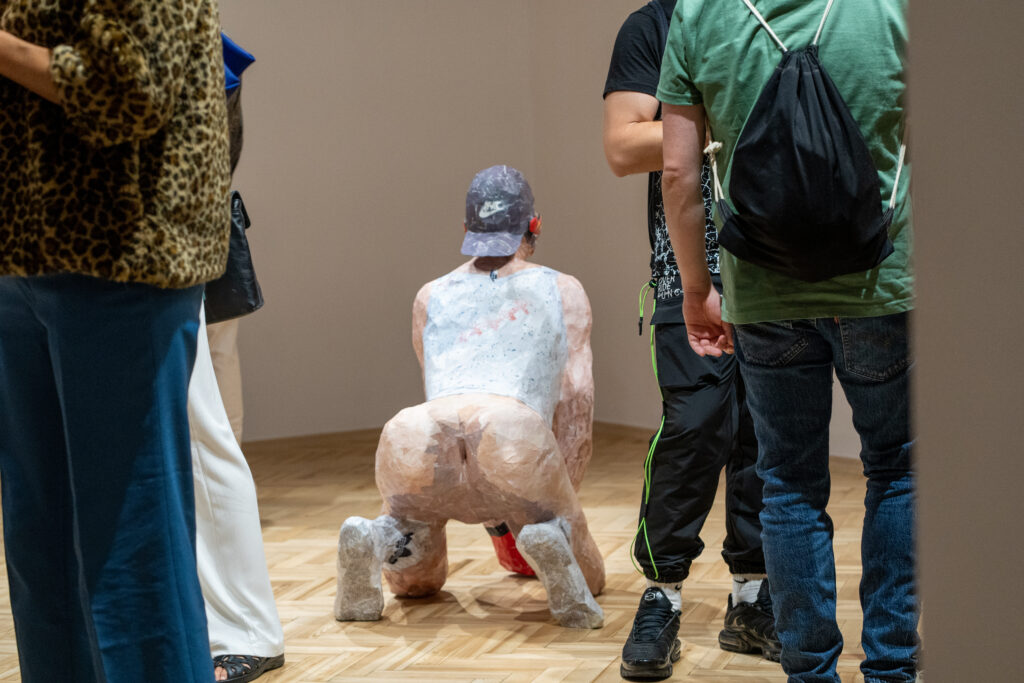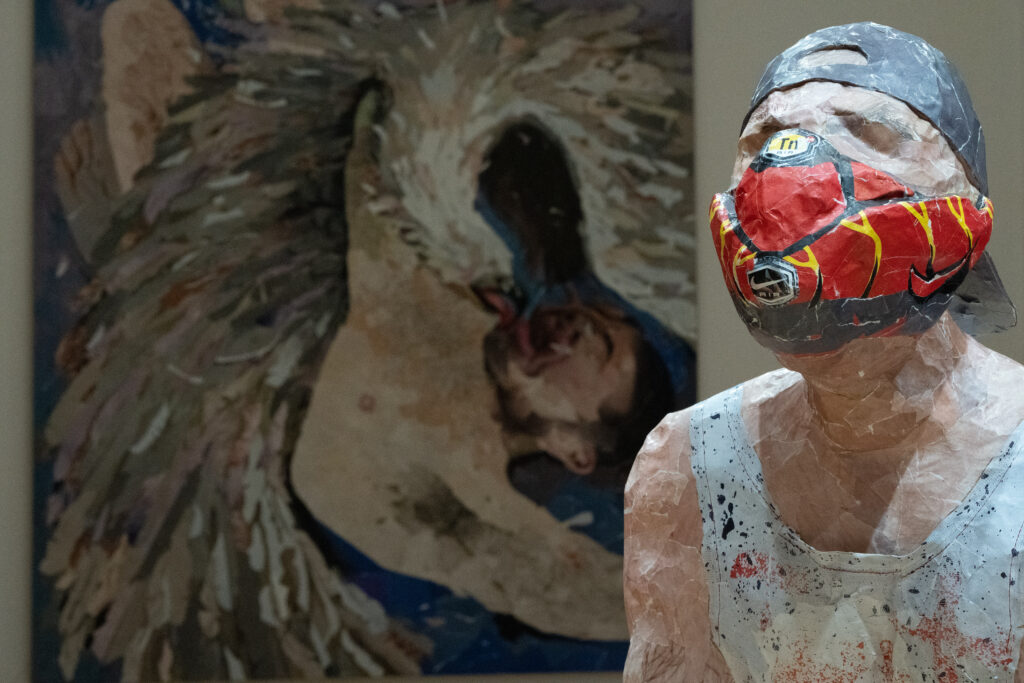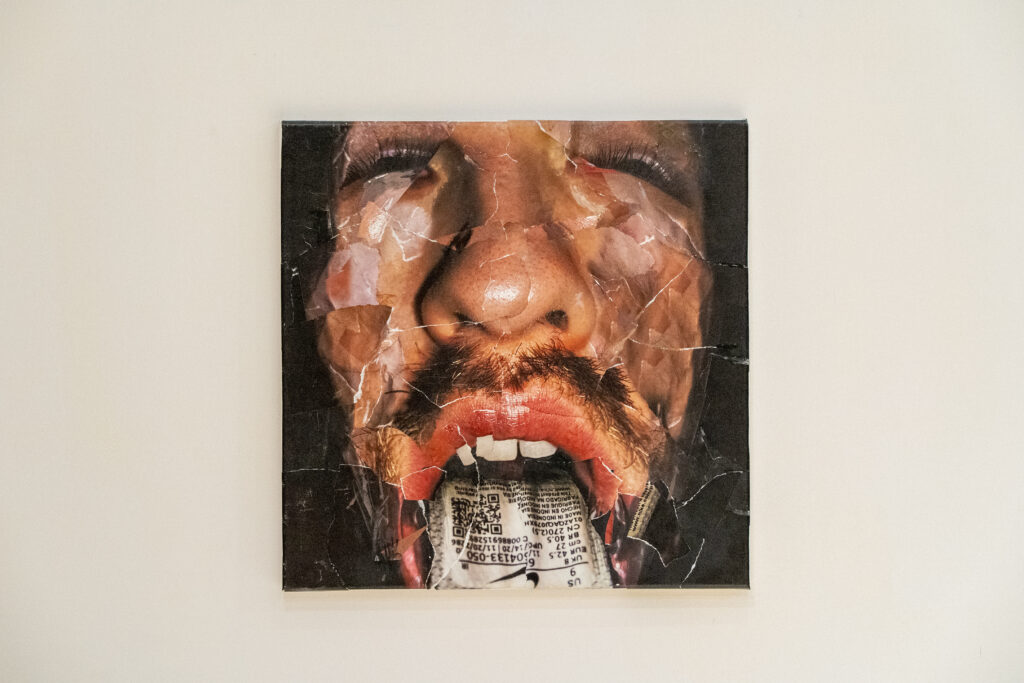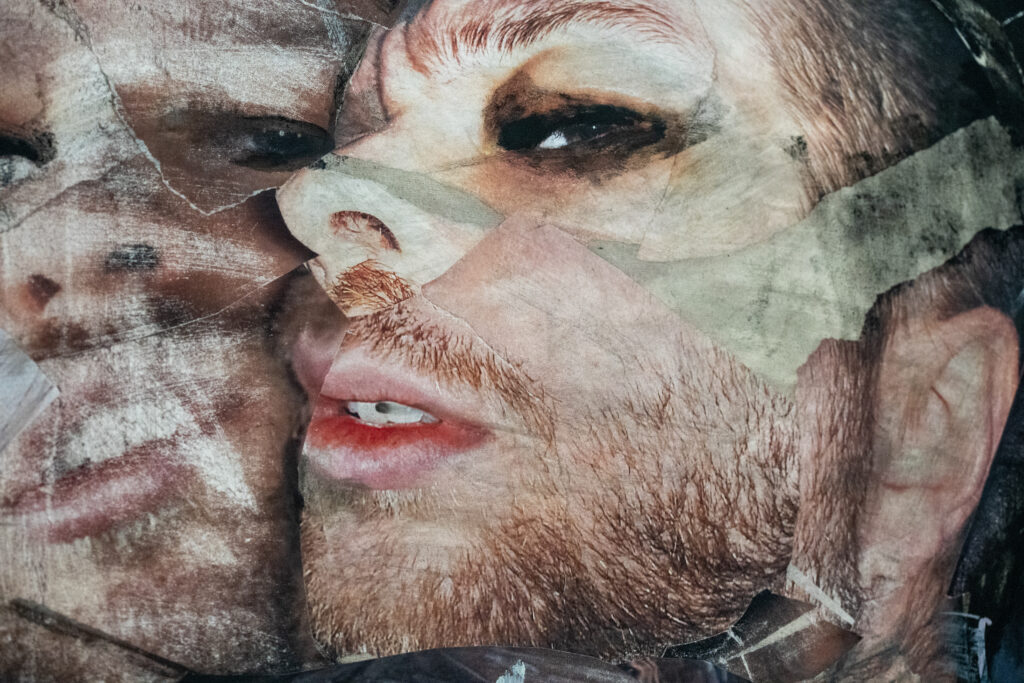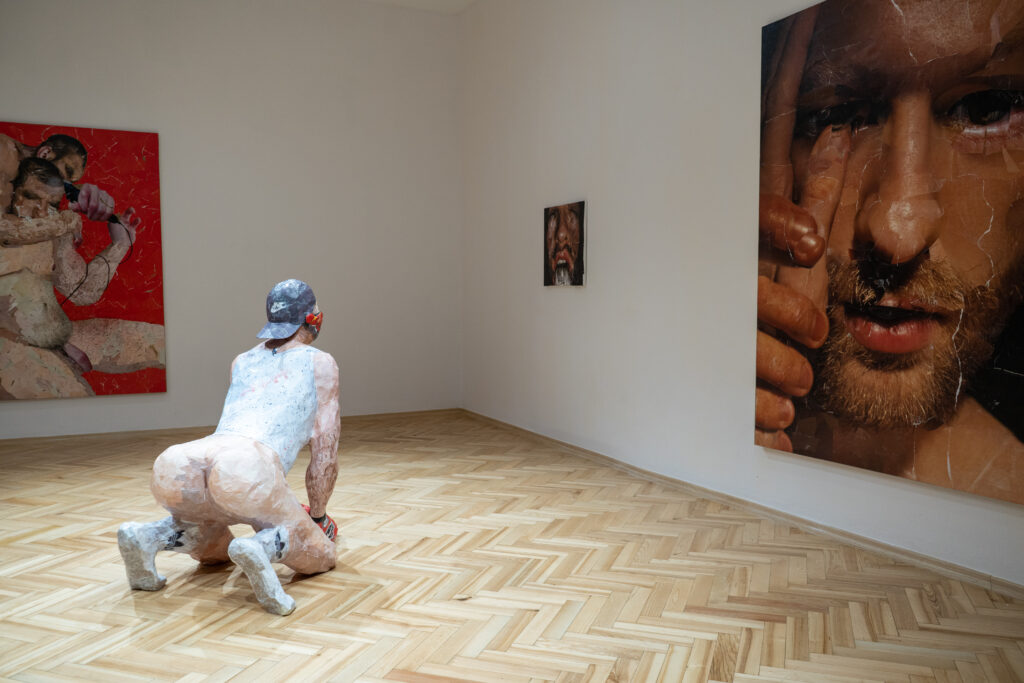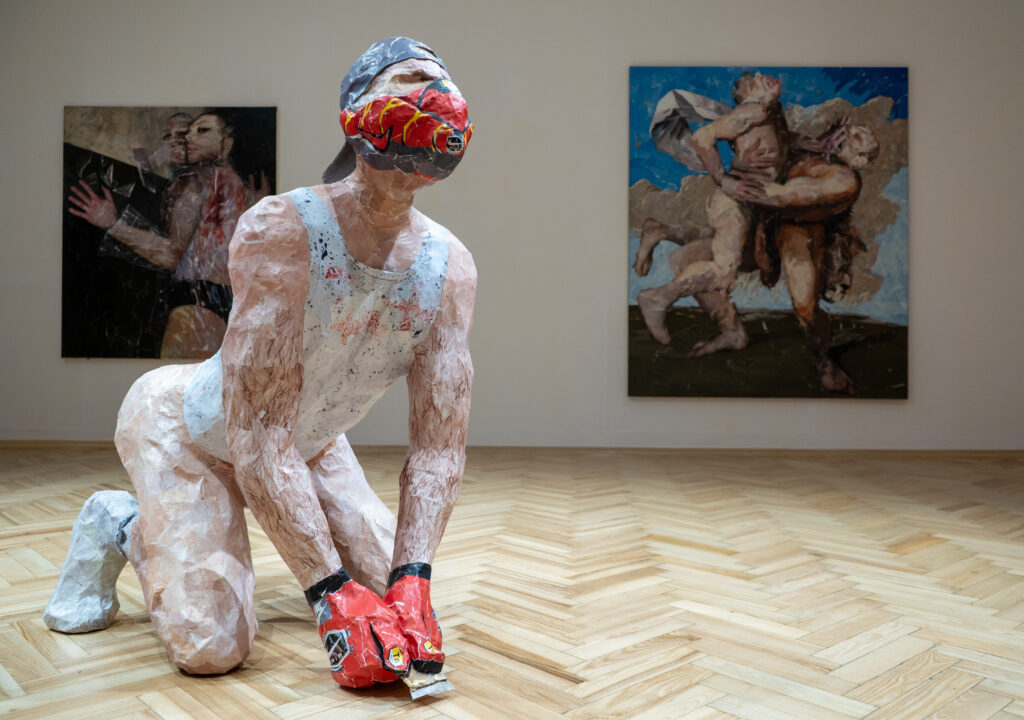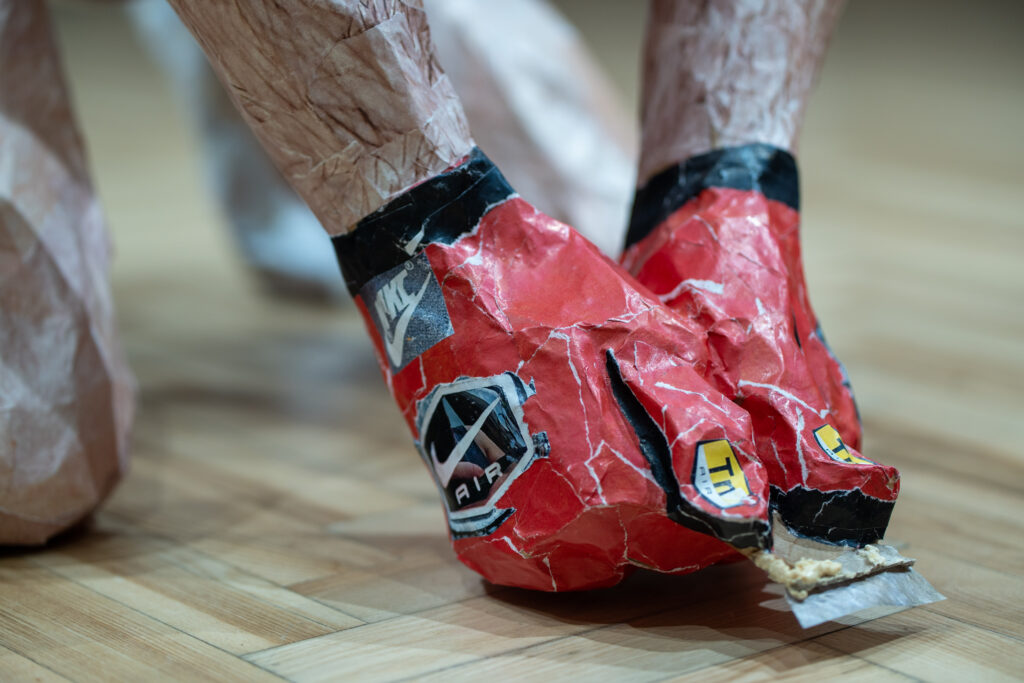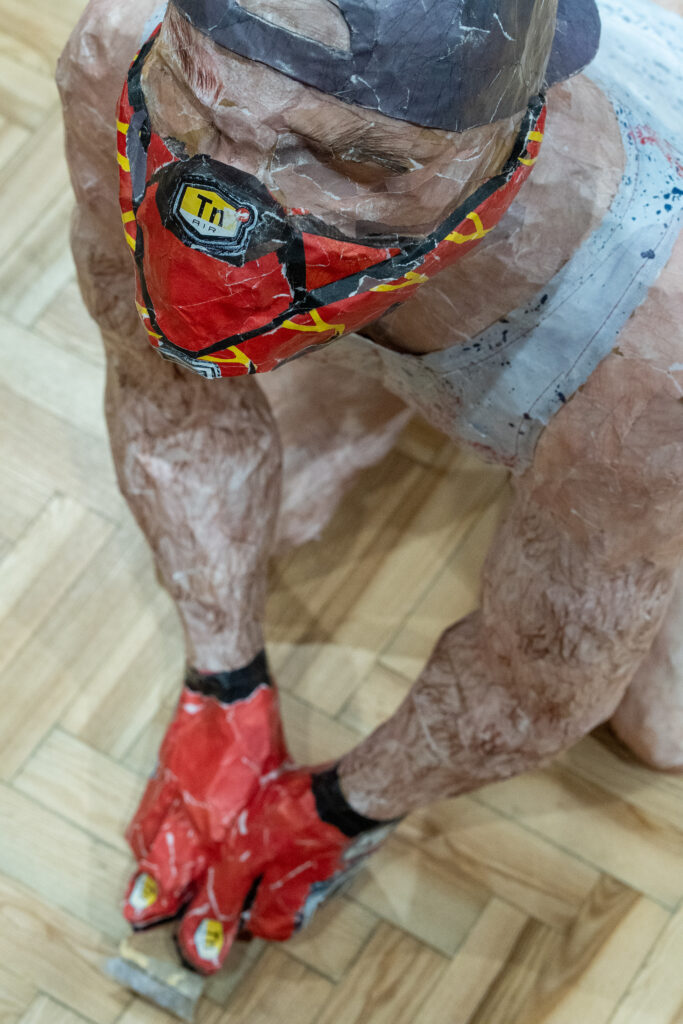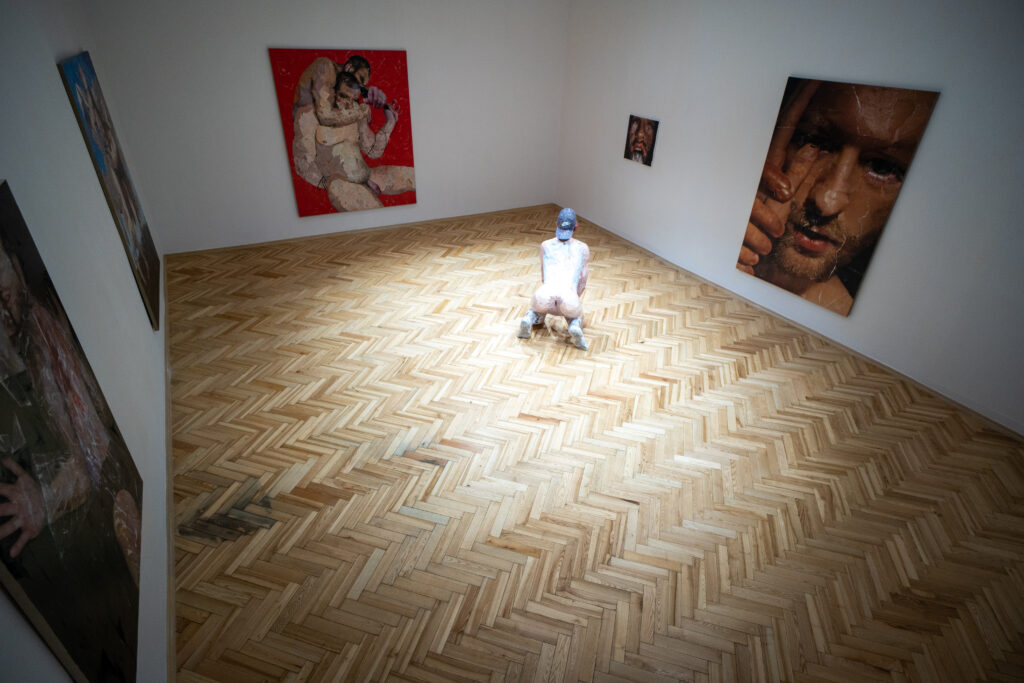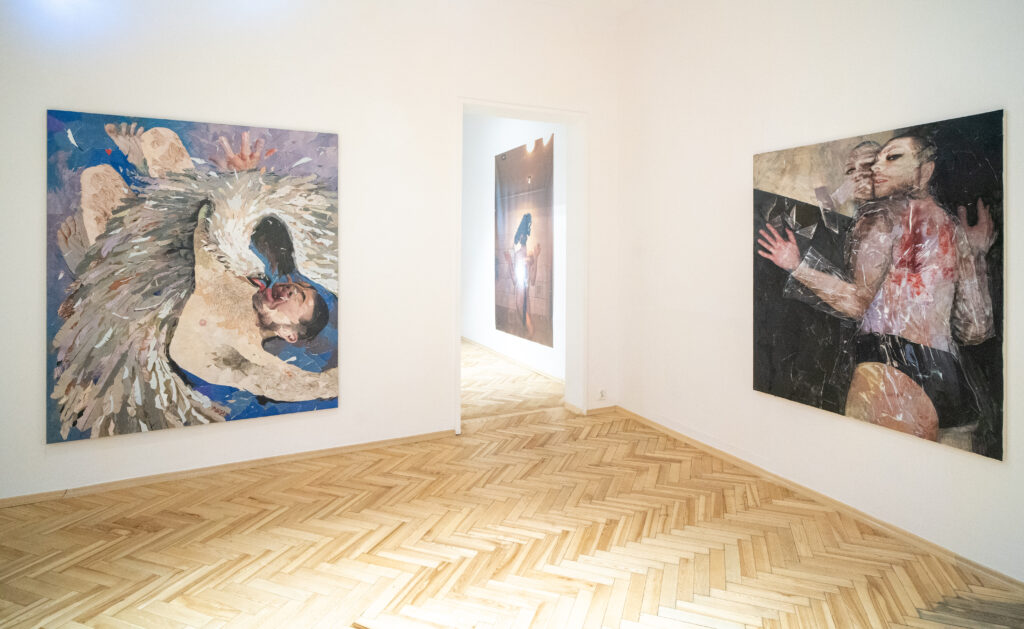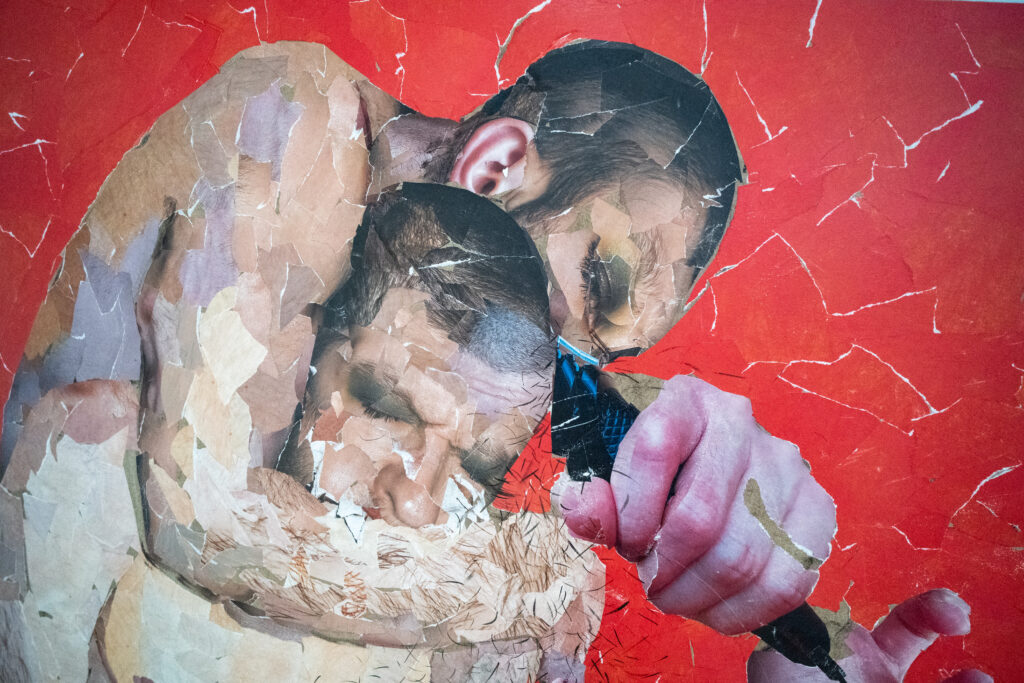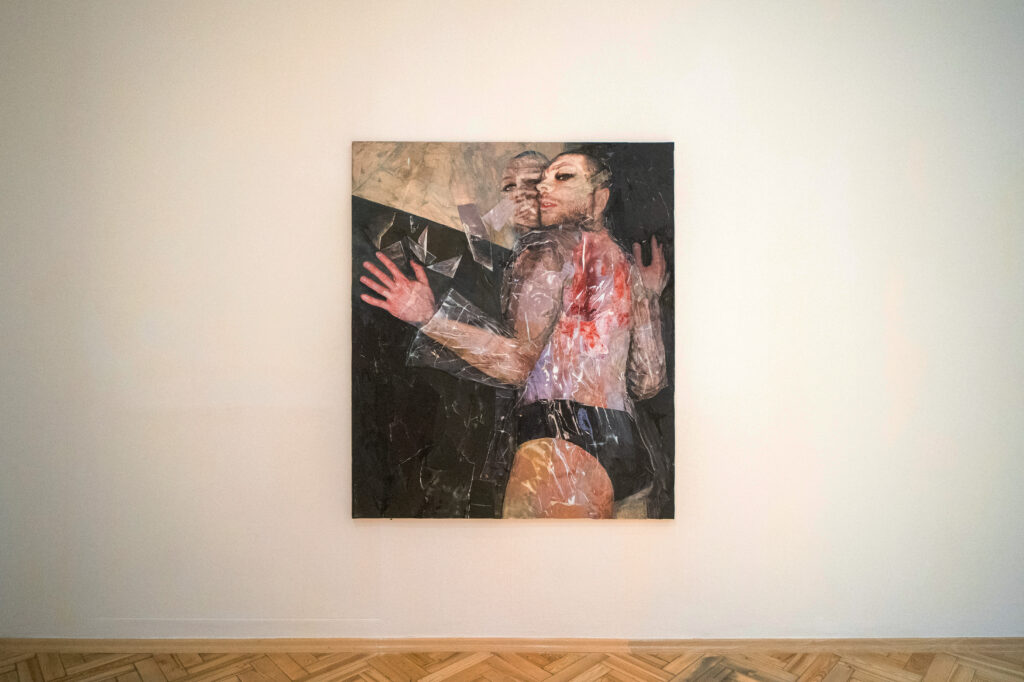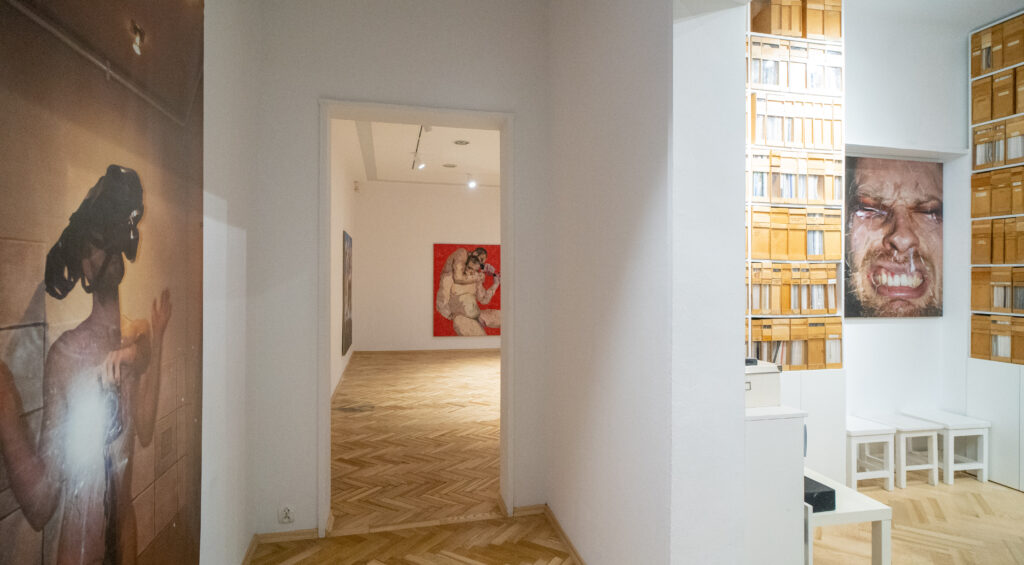WE’RE NO COMPUTERS, SEBASTIAN, WE’RE PHYSICAL
PL
Tytuł wystawy został zaczerpnięty z filmu „Łowca androidów” Ridleya Scotta. „Macie w sobie coś ze mnie. Pokażcie mi coś… cokolwiek” – mówi inżynier genetyczny Sebastian do Roya i Pris, dwojga replikantów, których DNA współtworzył. Roy odpowiada: „Nie jesteśmy komputerami, Sebastianie, jesteśmy bytami cielesnymi”. I tym samym odmawia wykonywania poleceń.
Zbieżność imion między artystą a postacią filmowego inżyniera nie jest przypadkowa. To sugestia, że prace Winklera pouczają swojego twórcę niczym zbuntowane replikantki. Tak jakby chciały podkreślić własną niezależność i skłonność do niesubordynacji. Tak jakby mówiły: „Żyjemy własnym życiem. Nie jesteśmy maszynami do prowadzenia walki lub spełniania seksualnych fantazji” (do tych właśnie celów najczęściej wykorzystywano androidy w filmie Scotta).
Pokazywane na wystawie prace to autoportrety – wizualne repliki/klony artysty. Są one queerowymi porażkami widzenia, zapisem nieudanych prób sklejania tożsamości z obrazowych strzępów. Odzwierciedlają fiasko socjalizacji, wtłaczania osób queerowych w ramy heteronormy. Wyraźne zainteresowanie artysty tym, co nie-ludzkie – postaciami androidów, obcych, klonów, cyborgów, hybryd, mitycznych herosów – jest reakcją na doświadczenie dehumanizacji, a także przejawem alienacji, wyobcowania ze status quo.
Większość tych nie-ludzkich postaci ma zasłonięte lub zamknięte oczy, co przywodzi na myśl powiedzenie o „oczach jako oknie duszy”. Cóż, w tym przypadku okna są zatrzaśnięte i trudno powiedzieć, czy w ogóle coś się za nimi kryje. Od tej reguły są dwa wyjątki. „Ellen Ripley” patrzy, lecz nie widzi – jej ciemne, spękane, pozbawione tęczówek gałki przypominają czarne dziury, wyglądają, jakby zapadały się w głąb siebie. Wydają się jednocześnie tępe i smutne, mechaniczne i podatne na zranienie. Z kolei „Zhora” ma oczy szeroko otwarte, ale martwe. Została zabita przez łowcę podającego się za przedstawiciela Komitetu Wykroczeń Moralnych. Była to kara za próbę ucieczki, za odmowę podporządkowania i wykonywania dalszej pracy na rzecz opresyjnego systemu.
Pozostałe obiekty również odnoszą się do kategorii pracy i związanej z nią alienacji. Pojawiają się tu wątki pracy fizycznej, emocjonalnej i seksualnej, pracy jako misji i jako pokuty. Jedyna rzeźba, jakby wyciągnięta z gejowskiego porno, nosi tytuł „Cykliniara”. Przedstawia ni to pracownika seksualnego, ni to robotnika podejmującego próbę renowacji parkietu – w każdym razie postać całkowicie nieprzygotowaną do przydzielonego jej zadania, z fetyszowymi akcesoriami zamiast narzędzi remontowo-budowlanych.
Nienormatywność i wynikające z niej poczucie nieadekwatności przejawiają się w zaburzeniach wizji. „Czuję to za moimi oczami” – wyznaje klon Ellen Ripley z filmu „Alien: Resurrection” Jean-Pierre Jeuneta, mając na myśli Obcego, z którym dzieli kod genetyczny. Podobnie Winkler odczuwa obcość swoich pragnień, kulturowych kodów, obrazów, które przyszły z zewnątrz (z filmów, reklam, pornografii, mitów) i zostały zaszczepione w jego nieświadomości niczym implanty. A następnie wyrwane i wystawione na pokaz.
[Autor tekstu: Piotr Fortuna]
kuratorka: Martyna Stołpiec
współpraca: Milena Stryjewska
EN
The title of the exhibition is a quote from Ridley Scott’s ‘Blade Runner’. ‘There’s some of me in you. Show me something… like anything,’ says genetic engineer Sebastian to replicants Roy and Pris, whose DNA is partly of his design. Roy replies: ‘We’re no computers, Sebastian, we’re physical,’ thus refusing to follow orders.
The artist bears the same name as the engineer referenced in the title, and it is not a coincidence. It suggests that Winkler’s works resemble rebellious replicants and are lecturing their creator. As if emphasizing their own independence and their propensity for insubordination. As if saying: ‘We live in our own way. We are no machines ready to fight your battles or fulfil your sexual fantasies’ (in ‘Blade Runner’ these are the two tasks usually assigned to androids).
The works exhibited are all self-portraits – pictorial replicas or clones of the artist. They are queer failures of seeing, documenting unsuccessful attempts to build a solid identity out of visual scraps. They reflect a failure of socialization, society’s inability to force queer people into confines of heteronormativity. The artist’s pronounced interest in the domain of non-human – in figures of androids, aliens, clones, cyborgs, hybrids and Greek heroes – is a reaction to the experience of dehumanization,and also an expression of alienation, a queer estrangement from the status quo.
Most of these non-human characters have their eyes covered or closed. It reminds us of the saying that ‘eyes are windows to the soul’. In this case the windows are shut, and we cannot tell what – if anything – is behind. There are, however, two exceptions. Ellen Ripley is staring ahead, but not seeing – the dark, cracked eyeballs with no iris resemble black holes, as if they were sinking deep into themselves.They are both blunt and sad, mechanical and vulnerable at the same time. Zhora’s eyes are wide open, but (literally) lifeless, as she had been killed by the ‘blade runner’ allegedly representing the Committee of Moral Abuses. Actually, she was punished for an attempt to escape – for a refusal to conform and continue her work to the benefit of the oppressive system.
Most of the objects refer to the issue of work and reflect upon the problem of alienation, which results from it. There are motifs of physical, emotional and sexual labor, of labor as a life mission and as atonement. The only sculpture, which looks as if extracted from gay porn, is titled ‘The Floor Scraper’. It depicts something between a sex worker and a manual worker renovating a wooden floor – definitely a person totally unprepared to perform the assigned task, equipped with gay fetish accessories instead of professional construction tools.
This queer feeling of inadequacy is also manifested in a distorted vision. ‘I can feel it behind my eyes,’ confesses Ellen Ripley’s clone from Jean-Pierre Jeunet’s ‘Alien: Resurrection’, referring to the alien inscribed in her genetic code. Similarly, Winkler feels the alien nature of his desires, cultural codes, images and norms, which came from the outside (e.g. movies, commercials, pornography or myths), andare like implants put into his unconsciousness. And then plucked out and staged for display.
[Written by Piotr Fortuna]
curator: Martyna Stołpiec
cooperation: Milena Stryjewska
fot. Michał Rybacki
